Last updated on September 30th, 2022
Venezuela, officially the Bolivarian Republic of Venezuela, is a country on the northern coast of South America. It has an area of 912,050 square km. Caracas is its capital and largest city. Spanish is its official language. The Venezuelan Bolivar (VEF) is its official currency. Its land bordering countries are Colombia, Brazil, and Guyana.
The multicultural and geographically diverse South American country of Venezuela shares its northern shoreline with the Caribbean Sea and the North Atlantic Ocean, drawing vacationers with its beauty annually. Read on to discover 82 interesting facts about Venezuela.
Venezuela facts about its geography, environment, and climate
1. Venezuela is blessed with magnificent, diverse geography. It has Caribbean islands, rivers, marshlands, mountains, glaciers, highlands, grasslands (los llanos), deserts, canyons, mesas, forests, and jungles.
2. The country’s habitats range from the Andes Mountains (west) to the Amazon Basin rainforest (south) to the Caribbean coast (north) via the extensive llanos plains (central) to the Orinoco River Delta (east).
3. The northern edge of the Amazon Basin is in the southern part of Venezuela.
4. The largest lake in South America is located in Venezuela. Lake Maracaibo, at 20 to 40 million years old, is also one of the oldest lakes on earth.
5. Catatumbo lightning is a meteorological phenomena that only occurs at the mouth of the Catatumbo River where it joins Lake Maracabio. For up to 160 days a year, lightning strikes the lake repeatedly for up to ten hours at a time in the evening.
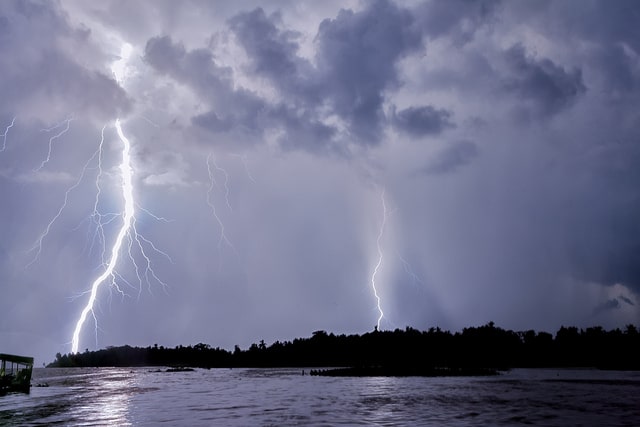
6. Entirely located in the tropics, the country has two types of seasonal weather: the hot-humid season and the hot-dry season. The difference is the amount of rain received during the season.
7. Venezuela is one of the 17 most biodiverse countries on the planet (a megadiverse country).
8. The scrublands, mangrove and cloud forests, and rainforests are especially rich in biodiversity.
9. Venezuela is one of the top 20 countries in the world whose animals and plants are endemic (unique) to the country.
10. Fifty percent of the amphibians and 23 percent of the reptiles are unique to Venezuela. Thirty-eight percent of the plant species and 48 percent of the birds are.
11. Venezuela’s cloud forests are home to over 25,000 species of orchids including the ‘flor de mayo’, the country’s national flower.
12. Over 3,900 species of fungi have been discovered and recorded from Venezuela.
13. Venezuelan animal life includes three-toed and two-toed sloths, Amazon river dolphins, Orinoco crocodiles (which grow up to 22 ft/6.6 m in length), giant anteaters, jaguars, and capybaras.
14. More than half of all the mammal and bird species of Venezuela are found in the Amazon forests south of the Orinoco River basin including the troupial, Venezuela’s national bird.
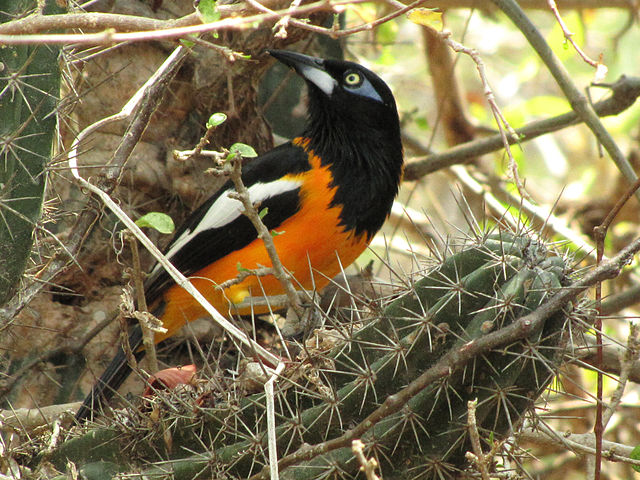
15. Venezuela has 43 national parks and up to 33 percent of its forested land is protected.
16. In the country’s far south is a 32,000 square mile (82,880 km) reserve for the Yanomami tribes that is off-limits to miners, farmers, and all non-Yanomami settlers.
History
17. Before Europeans came to the country, the ancient Timoto-Cuica culture had permanent villages, irrigated and terraced fields, and even stored their water in tanks. After the conquest, many died of diseases brought by the Europeans.
18. In 1497 on his third voyage to the Americas, Christopher Columbus sailed to the Orinoco Delta and declared he had found “Heaven on Earth”. He named this region “Land of Grace” and that remains the country’s nickname today.
19. In 1499 Alonso de Ojeda’s expedition visited the country’s coast and discovered the stilt houses around Lake Maracaibo. Because they reminded his navigator Amerigo Vespucci of the city of Venice, he named the region Veneziola (“Little Venice”).
20. The territory was colonized by Spain in 1522. It became one of the first Spanish-American colonies to declare independence in 1811 and finally gained it in 1821 under Simón Bolívar as part of Gran Columbia.
21. In 1830 the country broke away from Colombia to become an independent republic. Páez became the first president.
Venezuela on the map
22. From 1830 until democracy was restored in 1958, Venezuela experienced revolutions, dictatorships, counter-revolutions and military juntas.
23. Hugo Chavez attempted two coups in 1992 and was imprisoned when both failed.
24. Chavez was elected president by a landslide in December 1998 and immediately began to bypass the Congress and constitution in order to control the economy and extend his term.
25. In 2000 Chavez was re-elected in another landslide and more turmoil began with coup attempts, general strikes, a recall attempt, and sanctions from other countries. He was re-elected in 2006 and again in 2012 but died in office in March 2013.
26. President Nicolas Madura expelled U.S. diplomats in September 2013. U. S. President Obama placed sanctions on Venezuela and labeled them a national security threat in March of 2015.
Flag of Venezuela

Economy
27. Venezuela is one of the most urban countries in Latin America. Its capital is the city of Caracas.
28. Local currency is the Bolivar Fuerte. Once you change your money to this currency, you can’t change it back to dollars or euros so be aware of this and plan accordingly.
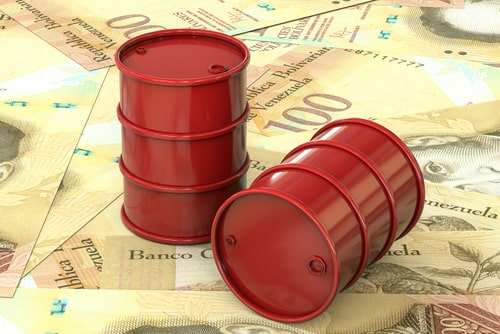
29. Since the discovery of massive oil deposits in the Lake Maracaibo area during the early 20th century, Venezuela has been one of the world’s leading oil exporters.
30. Venezuela has the world’s largest oil reserves and is a founding member of OPEC.
31. The country consistently ranks among the world’s top ten crude oil producers and has the eighth largest natural gas reserves.
32. The petroleum sector is the major economic force and accounts for approximately 80% of their exports. Price controls begun under Chavez and continued under President Maduro have caused rampant shortages of basic supplies like milk and diapers nationwide.
33. The Guri Dam, one of the world’s largest, generates all the hydroelectric power the country relies upon.
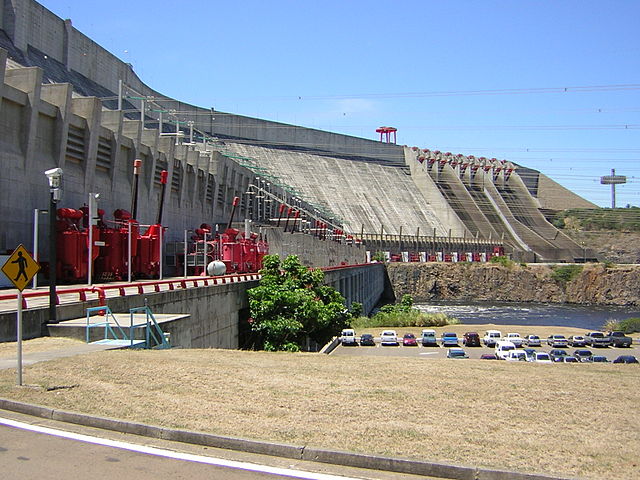
34. After declaring an economic emergency in January 2016 due to shortages of food and basic needs Maduro declared a constitutional state of emergency in May when drought caused a power shortage. He imposed rolling blackouts and reduced work hours throughout the country.
35. According to some experts, inflation in Venezuela could reach 2000 per cent in 2017 amid a chronic shortage of basic foods, goods and medicines.
36. President Nicolás Maduro demonetized 100 bolivar note from circulation on December 12 2016, giving people just 72 hours for exchanging their old currency for the new one from banks. The president accused U.S. based ‘mafias’ of their intention to destabilize the economy by hoarding Venezuelan bank notes.
Culture and People
37. The majority of the Venezuelan population is of mestizo, or mixed, ethnic ancestry. Ethnic minorities in the country are groups that descend mainly from African or indigenous peoples.
38. According to a DNA genetic study conducted in 2008 by the University of Brasilia, the composition of the population is almost 61 percent European, 23 percent indigenous, and a little over 16 percent African.
39. Spanish is the national language but the Constitution also recognizes more than 30 indigenous languages for the peoples’ use. In addition, immigrants speak their own languages.
40. The population is 88 percent Christian, predominantly Roman Catholic. There are small but influential Jewish, Muslim and Buddhist communities.
41. The Spanish influence can be seen experienced in the language, bull fights, food, architecture, religion, and food.
42. The African influence is notable in cuisine and the arts, especially music and dance. From the United States comes the national interest in baseball.
Sports
43. The sport of baseball was played in Venezuela as early as the late 19th century. North American immigrants who came to work in the 1930’s oil industry helped popularize it in the 20th century.
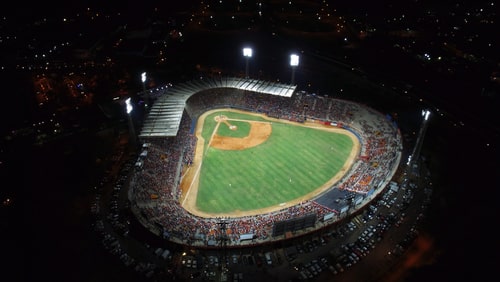
44. Venezuela has had a National Professional Baseball League since 1945 and today baseball is the nation’s most popular sport.
45. Famous Venezuelans who have played baseball in the U. S. include Bo Diaz, Manny Trillo, Cesar Tovar, Luis Sojo, and Dave Concepcion.
46. Basketball is also popular. Venezuela hosted the 2012 Basketball World Olympic Qualifying Tournament and the 2013 FIBA Basketball Americas Championship.
47. Football (soccer) is also popular.
. . . continue reading on the next page.
